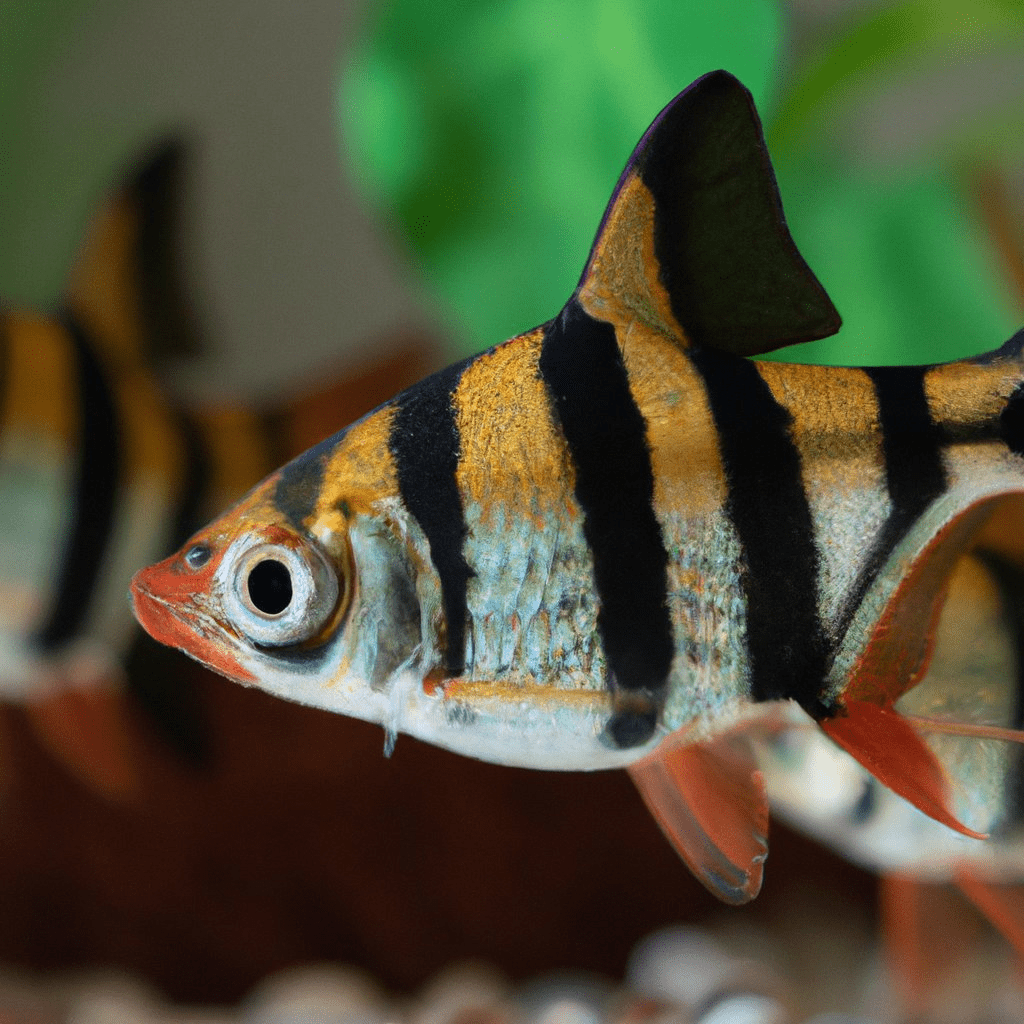All You Need To Know About Tiger Barb Aquarium Fish Before Getting Started
If you are looking for an aquarium fish with a vibrant personality, then the tiger barb fish might just be the perfect fit for you. This tropical freshwater fish is a popular choice for many aquarists due to its unique stripes and active behavior. However, before getting started with this species, there are some important things to know about their care, behavior, and compatibility with other fish. In this article, we will cover everything you need to know about tiger barb aquarium fish.
Table of Contents
- Introduction to Tiger Barb Fish
- Physical Characteristics of Tiger Barb Fish
- Tank Requirements for Tiger Barb Fish
- Water Conditions for Tiger Barb Fish
- Feeding Tiger Barb Fish
- Tiger Barb Fish Behavior
- Tiger Barb Fish Compatibility
- Breeding Tiger Barb Fish
- Common Health Issues of Tiger Barb Fish
- Diseases That Can Affect Tiger Barb Fish
- How to Treat Common Tiger Barb Fish Diseases
- Tips for Keeping Tiger Barb Fish Happy and Healthy
- Conclusion
- FAQs
Introduction to Tiger Barb Fish
The tiger barb fish (Puntigrus tetrazona) is a tropical freshwater fish native to Southeast Asia. This species is known for its distinctive black stripes that run vertically down its orange body. Tiger barbs are social fish that thrive in groups of at least six individuals, and they are also very active and playful, making them a popular choice among aquarists.
Physical Characteristics of Tiger Barb Fish
Tiger barb fish have an elongated body shape with a slightly pointed snout. They can grow up to 3 inches in length and live for up to 6 years in the right conditions. As mentioned before, their body is bright orange with four black stripes that run vertically down their body. Their fins are also orange with black tips, adding to their striking appearance.
Tank Requirements for Tiger Barb Fish
When setting up a tank for tiger barb fish, it is important to consider their natural habitat. Tiger barbs are native to slow-moving streams and rivers, so they prefer a tank with plenty of open space to swim around in, as well as plants and hiding spots to explore. A 20-gallon tank is suitable for a small group of tiger barbs, but larger groups will require larger tanks. It is recommended to have at least 6 tiger barbs in a group to prevent aggression.
Water Conditions for Tiger Barb Fish
Maintaining proper water conditions is crucial for the health and well-being of tiger barb fish. They prefer a temperature range between 72-82°F and a pH range between 6.0-7.5. It is important to keep the water clean and well-filtered, as tiger barbs are sensitive to ammonia and nitrate levels. Weekly water changes of 20% are recommended to keep the water parameters stable.
Feeding Tiger Barb Fish
Tiger barbs are omnivorous fish that enjoy a varied diet. They will eat both live and frozen foods such as bloodworms, brine shrimp, and daphnia. They also enjoy flake and pellet foods that are specifically formulated for tropical fish. It is important to avoid overfeeding tiger barbs, as they are prone to obesity and digestive issues.
Tiger Barb Fish Behavior
Tiger barb fish are known for their active and playful behavior. They are social fish that thrive in groups, but they can also be aggressive towards other fish if they are kept in small groups or with incompatible tankmates. Tiger barbs are known to nip at the fins of slow-moving fish, so it is important to choose tankmates that are fast-moving and can hold their own against tiger barbs.
Tiger Barb Fish Compatibility
When selecting tankmates for tiger barb fish, it is important to consider their temperament and behavior. As mentioned before, tiger barbs can be aggressive towards slow-moving fish with long fins. They also have a tendency to nip at the fins of other fish, so it is best to choose fast-moving fish that are not easily intimidated. Some suitable tankmates for tiger barbs include danios, rasboras, and corydoras catfish.
Breeding Tiger Barb Fish
Breeding tiger barb fish can be a rewarding experience for aquarists. To encourage breeding, it is recommended to keep a group of six or more tiger barbs in a well-planted tank with a substrate that allows for egg laying. The water temperature should be raised to around 80°F, and the lighting should be kept on for 12 hours per day. Once the female lays her eggs, the male will fertilize them and guard the nest until the eggs hatch in around 2-3 days.
Common Health Issues of Tiger Barb Fish
Tiger barb fish are generally hardy and resilient, but they can still be susceptible to some health issues. One common issue is ich, which is a parasitic disease that causes white spots to appear on the fish's body. Other issues include fin rot, swim bladder disease, and bacterial infections. It is important to monitor your tiger barbs for any signs of illness and address the issue promptly.
Diseases That Can Affect Tiger Barb Fish
In addition to the common health issues mentioned above, there are some diseases that can affect tiger barb fish specifically. These include tiger barb disease, which is a bacterial infection that causes red sores to appear on the fish's body, and neon tetra disease, which is a viral disease that can be transmitted to other fish in the tank.
How to Treat Common Tiger Barb Fish Diseases
Treating common tiger barb fish diseases typically involves addressing the underlying cause and providing appropriate medication. For example, ich can be treated with a medication that kills the parasites, while bacterial infections may require antibiotics. It is important to research the specific disease and treatment options before administering any medication to your fish.
Tips for Keeping Tiger Barb Fish Happy and Healthy
To ensure that your tiger barb fish thrive in their environment, there are some tips to keep in mind:
- Maintain proper water conditions and perform regular water changes
- Provide a well-balanced diet and avoid overfeeding
- Keep the tank well-planted with plenty of hiding spots and open swimming areas
- Keep a group of at least 6 tiger barbs to prevent aggression
- Choose fast-moving tankmates that can hold their own against tiger barbs
Conclusion
Tiger barb fish are a colorful and active addition to any aquarium. With proper care and attention to their needs, they can thrive in a well-maintained tank. Remember to keep their social and aggressive nature in mind when selecting tankmates, and monitor their health for any signs of illness. By following these tips, you can enjoy the vibrant personality of the tiger barb fish in your own aquarium.
FAQs
- Do tiger barb fish need a heater in their tank?
- Yes, tiger barb fish prefer a temperature range between 72-82°F, so a heater is necessary to maintain proper water temperature.
- Can tiger barbs live with betta fish?
- It is not recommended to keep tiger barbs with betta fish, as tiger barbs have a tendency to nip at the fins of slow-moving fish.
- How often should I feed my tiger barb fish?
- It is recommended to feed tiger barb fish small amounts 2-3 times per day, being careful not to overfeed
- Can tiger barb fish be kept in a community tank?
- Yes, tiger barb fish can be kept in a community tank as long as they are housed with compatible tankmates and in a suitable environment.
- How can I encourage my tiger barb fish to breed?
- To encourage breeding, keep a group of at least six tiger barbs in a well-planted tank with suitable substrate for egg laying. Raise the water temperature to around 80°F and provide 12 hours of lighting per day.
- How long do tiger barb fish live?
- Tiger barb fish can live for up to 6 years in the right conditions, but their lifespan may be shorter if they are not provided with proper care.
- Can tiger barb fish be kept with shrimp?
- Tiger barbs have a tendency to eat shrimp, so it is not recommended to keep them together in the same tank.
- How do I treat fin rot in my tiger barb fish?
- Fin rot can be treated by addressing the underlying cause, such as poor water quality, and administering appropriate medication, such as an antibacterial treatment.
- Can tiger barb fish be kept in a planted tank?
- Yes, tiger barb fish can be kept in a planted tank as long as the plants are compatible with their water requirements and they have plenty of open swimming areas.
- How many tiger barb fish should I keep in my tank?
- It is recommended to keep at least six tiger barb fish together in a group to prevent aggression and promote social behavior.


No comments:
Post a Comment